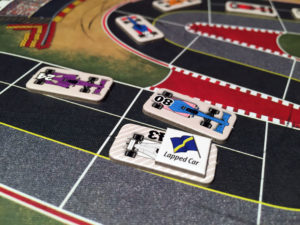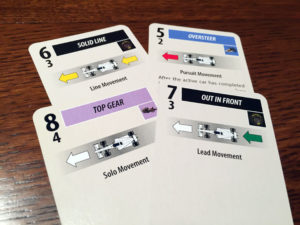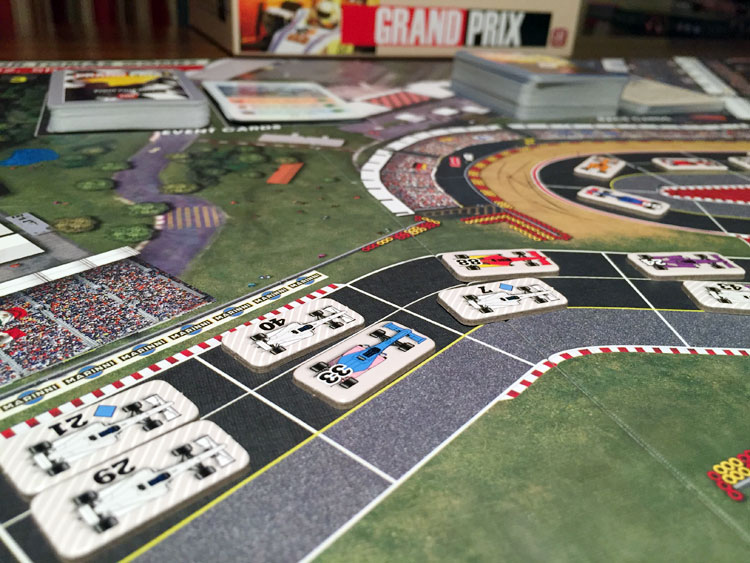 At my first job out of college, my boss was a massive Formula 1 fan. He would talk about the cars, the races, the teams, everything. I’ve never been much of a gear head, so I had very little exposure to sport racing up to that point. The main take away I remember from those conversations was that F1 Racing was the epitome of the sport…and that F1 fans largely consider Nascar some kind of garish exhibition on wheels.
At my first job out of college, my boss was a massive Formula 1 fan. He would talk about the cars, the races, the teams, everything. I’ve never been much of a gear head, so I had very little exposure to sport racing up to that point. The main take away I remember from those conversations was that F1 Racing was the epitome of the sport…and that F1 fans largely consider Nascar some kind of garish exhibition on wheels.
I have no idea if those sentiments are still true (or even ever where), but my lack of racing knowledge didn’t dissuade my excitement from checking out Grand Prix, the newest racing game from designers Jeff and Carla Horger, published by GMT Games. Based on their original game Thunder Alley, Grand Prix moves the excitement from the Nascar tracks up to the F1 circuit. So let’s fire up the engines and see if Grand Prix is a worthy successor to Thunder Alley.
Grand Prix is a hand management racing game for 2-11 players that takes about 90 minutes to play. Grand Prix plays well at a variety of player counts.
Game Overview:
While Grand Prix isn’t a Formula 1 racing simulation, it definitely seeks to capture the essence of F1 racing. The object, of course, is to try and get your two race cars across the finish line first.
To accomplish that, players will be using their hand of Race Cards to move not only their own cars, but a host of neutral race cars as well. Players will have to expertly manage a grid full of 22 races, wear on their cars, and even mishaps that can happen along the way if they hope to bring home the checkered flag.
Game Components:

This is the first title I’ve reviewed from GMT Games and, overall, I think they put together a solid package. While the components aren’t going to dazzle anyone, what GMT lacks in heavy plastic, they more than make up for in thoroughness.
The largest components included in the game are 4 race tracks. These are also compatible with GMT’s earlier game, Thunder Alley, should you already own it.
The race cars themselves are dual sided cardboard tokens. While the artwork is nice, I do have to say that the colors could have been done better. Race cars are flipped over when activated, and the two shades of grey are somewhat difficult to distinguish from at a glance. I really wish they would have used more contrasting colors as it can be difficult to tell an activated car from an unused one.
There are two decks of cards included in Grand Prix, an 80 card race deck and a 32 card event deck. Each race card has a movement type and possibly some wear conditions (more on that in a minute).
The rule book in Grand Prix was very well done. It’s only 20 pages long, but very thorough in the rules explanation. While I was a little intimidated at first by its sheer scope, after one read through, I felt like I had a really good grasp on how to play the game.
How to Play:
This will be a high level overview of how to play Grand Prix, if you want the full rules, you can download a PDF here.
The actual game play of Grand Prix isn’t that challenging once you get going. There are a lot of little exceptions that may come up during play, but the main concepts should be easy to pick up.
Once the starting grid of racers is setup and each player has a hand of race cards, you are ready to begin.
Each game of Grand Prix is played out in a series of rounds. At the start of the round, each player draws up to their hand limit. Then players take alternating turns taking one action.
For an action, a player chooses a car that has not yet moved this round to activate. It must either be a car they control, or a neutral car.

The player then chooses a race card from their hand to play. There are four main types of race cards:
Solo Movement: The activated car moves, usually by itself, the movement speed on the card played.
Line Movement: The activated car, and every car in front of and behind in the same line, moves the card’s speed.
Pursuit Movement: Same as with line movement, except only the cars in front of the activated car are also moved.
Lead Movement: Same as with line movement, except only the cards behind the activated car are also moved.
Most all movement uses a concept called linking, which will drag along cars behind or in front of a car when one is activated. Cards like solo movement can use conditional linking, where it will pull other cars for only parts of its movement. I imagine link is how the game simulates drafting in real races.
If the played race card has a wear market on it, then the activated car gains the specified wear token but, only if it’s a player car. Neutral cars never gain wear tokens. Wear tokens will eventually slow down your car (and ultimately destroy it) until a player makes a pit stop to repair the wear.
After all cars have moved, any lapped cars are then removed from the game. Finally, an event card is drawn and its effects are applied. These can do things such as damage cars, install safety zones, or even change the weather. Players have a chance to pit their cars at the end of the round. Wear can be removed from cars and cost a specific amount of spaces to fix.
The game ends when all cars have either crossed the finish line or been eliminated from the race. Players earn points based on when their cars crossed the finish line. Most points wins!

Game Experience:
I’m not going to spend very much time comparing Grand Prix to Thunder Alley. One, because I only played Thunder Alley once a long time ago and don’t feel well enough versed on it to comment intelligently. And second, I feel like games should be reviewed based on their own merits, not compared endlessly to other similar titles.
I will say though that a lot of the game play is clearly inspired from Thunder Alley, so if you have played this older game, you should be able to get up to speed in Grand Prix pretty quickly. And since Thunder Alley was a great system for a racing game, I’m perfectly happy with this reimplementation of the mechanics, especially because Grand Prix has some new tweaks.

What I really liked about Grand Prix was the massive racing grid. Even with only two players, we still have 22 cars to control. I’ve played other racing games and it never really feels right when you only have 3-4 cars on the track. A race NEEDS a lot of cars to be exciting.
Of course, the downside of all these cars is that the early game will move pretty slow. When you are doing line movement with 12 cars, it can be a little cumbersome to move them all 6 spaces. The good news is that things get easier as cars get eliminated or separated from the pack.
The other great feature of having all these cars is that Grand Prix is a really strategic game. The best racers are not going to be the ones that move their cars the best, but the ones that can control the pack. You can only move your own cars one time each round, but you can definitely uses the pack to push yourself around the track. This really helped give Grand Prix a great racing feel. Cars are moving fast and frequently. Heck, we almost completed the first lap in round one.
I freely admit to being a racing neophyte, yet I feel like the crowded track not only seems more authentic, but the various movement times remind me of drafting in real races. I love that you can draft along with a line of cars before suddenly peeling out on your own to advance you position.
One of the interesting things about Grand Prix is that the first player to cross the finish line isn’t always the winner. Since every racer has 2 cars, you need to make sure you score well with both cars if you hope to win. This also means that you can’t sacrifice one car to send your other car zooming across the finish line first.

Moving on, I think that the event deck did a good job of adding both excitement and variety to the race. When you displace a car in Grand Prix, you get a close call token. While this won’t slow you down the event deck definitely will take advantage of these. Basically, it’s karma coming to bite you.
However I do wish that we drew a few more event cards during the race. You are probably only going to see 4-6 of them a most in a game, and I found myself wishing they came out just a tad more frequently as I liked the excitement they added.
I was also surprised at how well Grand Prix worked at the lower player count. We tried with only 2 players and each player get their 2 team cars to control, and also 4 neutral cars that only that can activate. This added another level of strategy to the game where I not only tried to advance my position, but actively tried to make sure my opponent’s NPC cars got knocked out as quickly as possible. By the end of the race, I had three NPCs cars to their one. This gave me many other options for activating and pushing my own cars, which helped propel me to victory.
Final Thoughts:
I’m not here to tell you if Grand Prix is a better game than Thunder Alley. But what I can tell you that Grand Prix is a great game that, while it’s obviously not meant to be a F1 simulator, it does a great job of bring the F1 feel to our tabletops. The turns are strategic, the mechanics solid, and the giant grid of cars really brings home that racing feel.
I was most impressed with how well Grand Prix scales, as you can have fun with the game at the very lowest player counts up to the higher ones. While the components could use a little bit of work (those car backgrounds…) everything else is really well put together.
You don’t have to be a gear head to enjoy Grand Prix, but the game does have a bit of a learning curve. However once you get used to the different types of movement, you can have a lot of fun zipping around the track.
If you’d like to pick up a copy of Grand Prix, you can get it for about $50.
Final Score: 4 Stars – A great, strategic racing game that both scales well and is a lot of fun to play.
 Hits:
Hits:
• Scales well
• Event deck adds variety and excitement
• Enjoy playing with the large grid of racers
Misses:
• Background colors on the cars needs to be better
• Wish events happened more frequently
• Early game can be slow due to moving a large amount of tokens






















